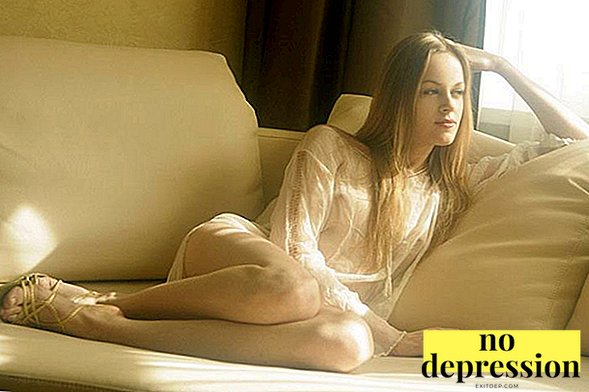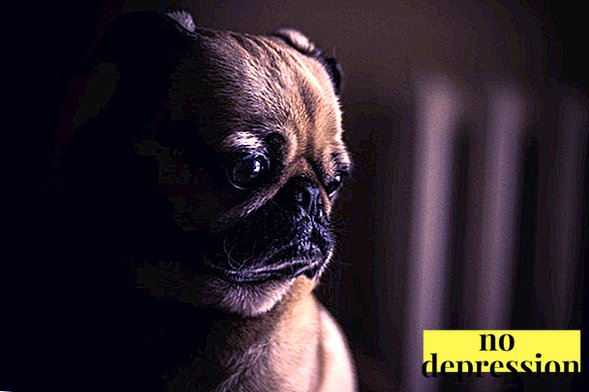Like other colors, purple for centuries attributed certain characteristicsthat have been improved and changed as humanity evolved.
Currently, various specialists continue to relate the characteristics of people’s character and their color preferences, and purple color in psychology also considered repeatedly.
What does psychology mean?

Violet is obtained by mixing blue and red, so psychologists often consider it intermediate color, partially combining the features of red and blue.
There are various shades of purple, such as fuchsia, purple, adelaide and others, differing from each other by the combination of red and blue, brightness and saturation.
Interesting information about purple color:
- in spite of the fact that at the base of violet lies not only blue, but also red, it is referred to as cold shades;
- during the Middle Ages, purple symbolized grief over the death of one of the royal families;
- also purple symbolized the power of kings.
What does violet mean in psychology? Find out from the video:
Associations and Symbols
The first association with violet color is flowers, berries, fruits and vegetables painted in its different shades.
For example, purple have some grape varieties, currants, plums, violets, hyacinths, certain types of lilac, saffron.

Eggplants also have a rich purple color.
However purple color in nature is quite rare, and many varieties of flowers having this shade are bred by selection.
Purple color has long been symbolizes wisdom, mystery, creativity, concentration, tranquility, majesty, power and authority, nobility, reverie, imagination, the desire for creation and knowledge, and in some beliefs it is associated with extrasensory perception and other supernatural worlds.
Many people subconsciously associate its with unusual and attractive phenomena, for example with the cosmos. In antiquity, purple and its shades, especially those in which more red rather than blue, were worn by royal persons, representatives of the priesthood, wise men.
Purpose of use in advertising
Colors in the design of advertising are always taken into account, because the correct combination of them increases the likelihood that a person will remember the logo and features of the product and, when confronted with it, will acquire it.
Also, correct work with color will help to visually highlight the necessary objects in advertising, to which a potential buyer will pay attention, make them more attractive, beautiful.
According to statistics, color ads are remembered. 30% more viewersthan black and white.

Food packaging should display its contents.
Violet color in packs It is usually used in cases when the product contains fruits, vegetables or berries colored in it (for example, purple or blue will pack gum with a taste of blueberries, plums or currants).
Purple color harmoniously looks in creative, outrageous advertisementsdesigned to attract the attention of creative people. It is often combined with yellow, gold. Items painted in purple are also often targeted at a creative audience.
Impact on well-being
In alternative medicine, there is a direction called "color therapy." It is based on the idea that colors and their combinations able to influence the somatic and mental well-being person
However, it is important to note that color therapy is considered pseudoscience, because studies have not shown its effectiveness.
It is impossible to fully treat people with its help, but the colors and activities associated with their use, in any case, can have a moderate positive effect on the condition.
In other words, cancer or stomach ulcers with flowers. can not be cured.

But life in the interior with a harmoniously selected combination of shades, drawing and other activities related to color perception, can make a person's life a little better, raise his spirits, bring tranquility or, on the contrary, make him feel arousal.
Also work with flowers develops imagination and intelligence, therefore especially useful for children.
Violet color, according to the opinion of color therapists, has the following effects on well-being:
- Renders sedative effect on the nervous system, can reduce the aggressiveness inherent in short-tempered people, can mitigate anxiety attack, severe panic, speed recovery from neurosis. However, the abundance of dark purple in the interior, on the contrary, can adversely affect a person's mental well-being, especially if he has diagnosed mental diseases.
- Stabilizes the pulse, can slow down the heartbeat.
- Reduces the severity of pain (partly due to its soothing, relaxing effect), has a positive effect on the well-being of people suffering from chronic pain.
- Stimulates the brain, improves memorization, increases concentration and generally has a positive effect on a person’s cognitive abilities. Also, purple is capable of enhancing imagination, which is why creative people like it so much.
- Has a beneficial effect on work organs of vision, spleen, lymphatic system.
Color therapists are traditionally more positive about light shades of purple than dark ones.
It is believed that bright, juicy and soft, pastel shades affect the well-being better than dark.
How does psyche affect purple? Learn from the video:
Who and why chooses it?

For a start it is worth saying that the value of color preferences in many popular sources overly exaggerated.
Articles in various publications are full of loud statements like “everyone's favorite color will tell about a person”, and some people are really inclined to believe it.
At least because such an interpretation simplifies life. What is easier - to ask a new friend, what is his favorite color - and, behold, his whole personality is supposedly on the palm.
But the character of a person is made up of many details, and preferences in color are just one of them. To understand what a person is, know his favorite color. not enough.
Most often, people tend to choose the color purple:
- Interested in creativity. Perhaps they draw, or play a musical instrument, or they are addicted to dancing, or write artistic works. Many of them seek to earn their hobbies, or have already done so.
They can be faddish, often able to generate unusual, creative ideas, they like to dream and dream, they enjoy reading books and watching movies (most often fantastic or fantasy).
There are many music lovers among them.
- Love freedom. This craving for freedom can be expressed in different ways, for example, in the form of a desire to be yourself in any situation or in the form of a categorical dislike for routine and monotony.
- Strive for knowledge. People who love the color purple often have a keen mind that allows them to climb the career ladder successfully and develop in areas important to them. They love to learn new things, read specialized publications and have a number of favorite scientific fields, in which they are quite advanced. It is pleasant to communicate with them, and they are happy to share interesting information.
- Have non-standard hobbies. Perhaps there are some wonderful sites for medical examiners and pathologists in the tabs that they regularly drop in, or they practice anapanasati (a type of meditation) in the morning, or do yoga. In any case, some of their hobbies, most people may find unusual, strange.

However, it is important to understand that people who do not have much to do with these characteristics can genuinely love the color purple.
Yes, and the definition of "creative person" can not give a complete picture of a particular person, because every creative person is creative in its own way.
And, of course, creativity is certainly not the only area that is important for these people. Therefore, it is important to get to know people, get to the depths of their personalities, and not be limited to labels, albeit positive ones.
Purple usually do not like people who:
- Prefer to stand firmly on the ground. These are materialists who seek to live here and now, prefer to plan, rather than dream and dream. They are more likely to choose natural science and technical areas.
- They love straightness. Inactivity in speech and action is not for them. They prefer to act openly, directly and expect this from others.
- Do not like arrogance. Also, they do not like the deliberateness, excessive eccentricity, the desire to put themselves in the best light by demeaning others directly or indirectly.

There is an opinion that women who love purple, sexually dissatisfied and and prefer loneliness. This statement was expressed by Sigmund Freud, the famous psychoanalyst and the founder of psychoanalysis.
But, despite the fact that Freud's ideas allowed him to promote psychology as a science, his views on some things are criticized.
And, I think, every single woman who loves the color purple is able to understand whether she has such problems.
After all, color is still just a color, and counting all women who love purple are lonely and sexually dissatisfied, somewhat incorrect.
Who is suitable?

Purple is considered the color of youth, therefore, perfect for teenagers and young people.
However, this color can be suitable not only for them, but also for all those who find it attractive and able to select combinations with other colors well.
Much depends not only on color, but on the form, combination with other colors, pattern.
Dark purple is not recommended to use as the main color in the interior, because it is excessively heavy, it is better to use lighter shades.
For the bedroom It is better to use blue-violet, because violet with a pronounced red tint will act stimulantly on the nervous system, rather than relaxing. Also, purple is perfect as an accent color.
Often there are allegations that the color purple is old, so it’s better not to wear clothes with it to people of old age. However, everything, again, rests on the particular color combinations.
For example, a properly selected purple cardigan, successfully combined with other things and hair, It will look great on the elderly lady.
Also, purple is recommended to wear for pregnant women. Perhaps because it has a calming effect on the nervous system.
Such a different purple color in the interior:
Negative characteristic

People who find the color purple attractive, The following negative qualities may be inherent:
- imperiousness;
- arrogance;
- excessive reverie;
- desire to control one's own feelings too much;
- vanity;
- pedantry.
Also, the love of red-violet in psychology is associated with infantilism, some inner immaturity.
In any case, a person who loves the color purple characterize not only his color preferences. It is important not to dwell on them and look at others around them more broadly and taking into account all their features.
How to wear purple? Tips:



